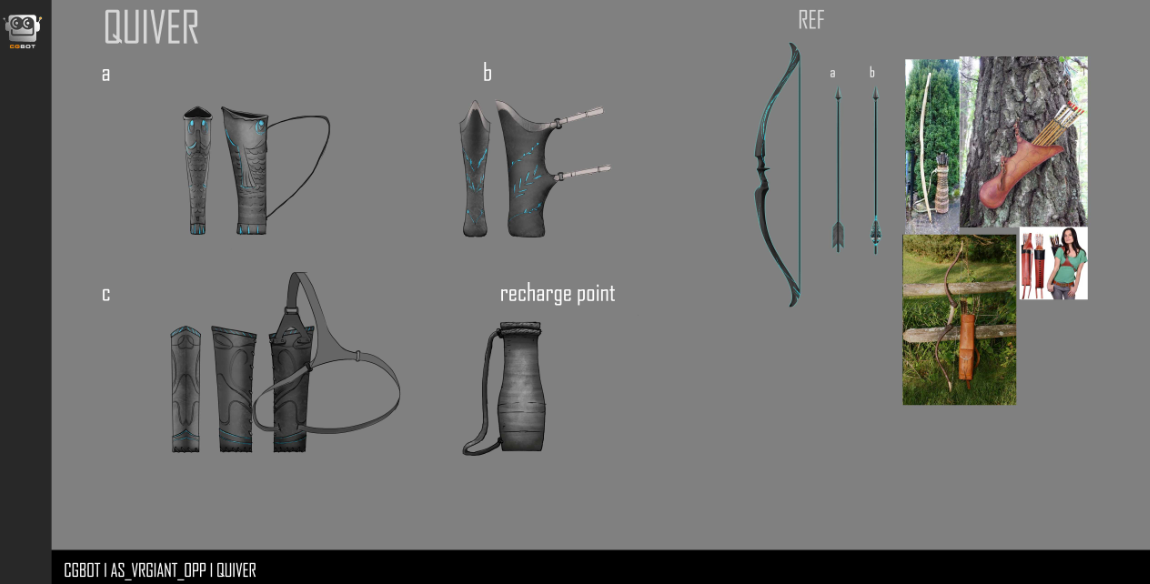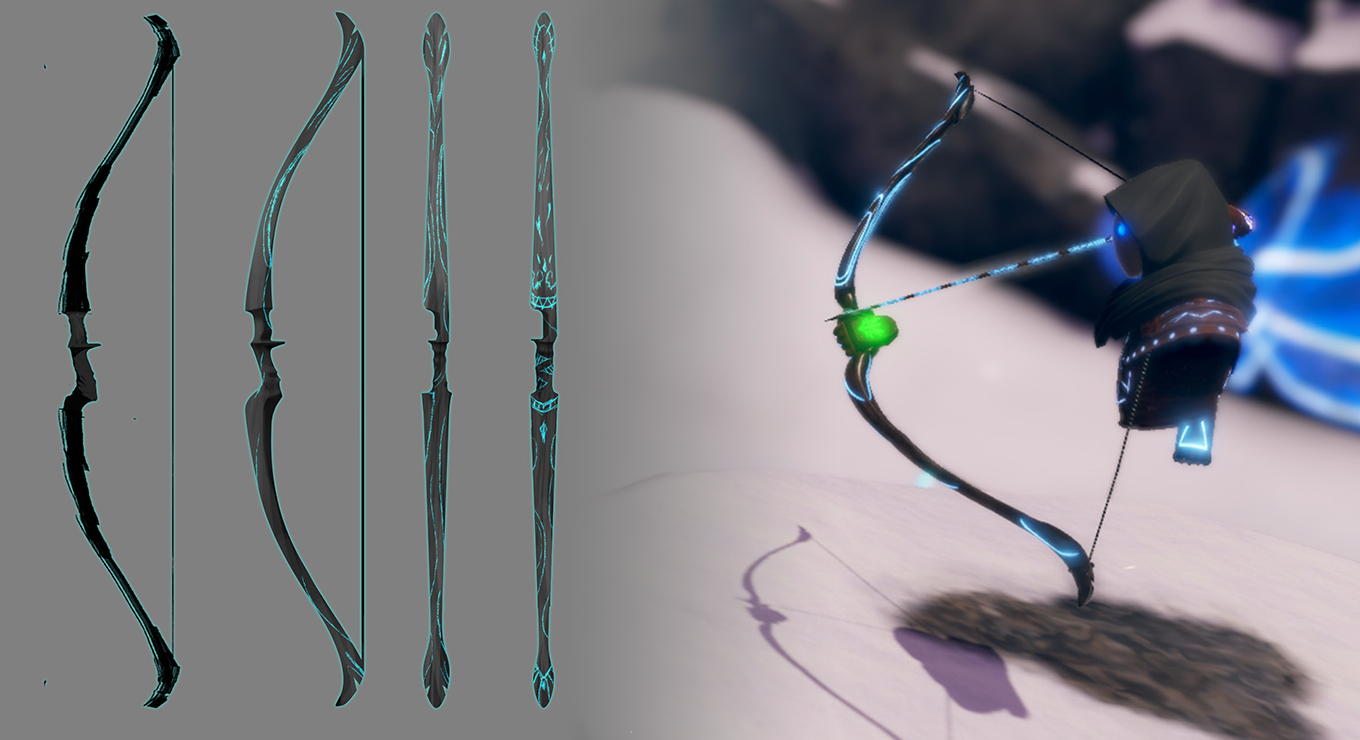Outsourcing a piece of your passion project requires a great deal of trust. But there are very few things as rewarding as describing something to a talented set of artists and watching what them bring it to life.
Near the end of 2016 I began working on QuiVr more significantly, and while I am proficient with game design and programming, my artistic skills remain squarely in the realm of "Photoshop-Texture-Alteration". Normally I would try to use the Unity Asset Store, but none of the archery models I could find had the right delicate fantasy silhouette I wanted. So with the prompting of my development partner I gave art outsourcing a try.
We worked with CGBot for pretty much all of the art in QuiVr from concept to final 3D models & animations. It was an incredibly cool experience to describe what you want to a talented team and watch it come to life. Here I'll break down the process from concept to final 3D model for the default Bow, Arrow, and Quiver used in the game.
The first thing to be done was to get some concept bows on 'paper' to define the rough shapes. I decided against giving much input before seeing a first set of concepts so that the artists could have as much creative freedom as possible with the designs.

As expected there were a lot of the 'traditional' fantasy bows with many extra sharp lines and cosmetic details. However seeing them all together let me pick out some features I wanted to keep and some themes I wanted to avoid. Instead of selecting a bow from the list I decided to give more general feedback about the designs and also included an image for some references.

One of the key features I wanted to highlight was 'function over form', this was for two reasons:
- This was to be the 'default' bow and future bows needed to be able to have a visual upgrade path.
- The bow will generally always be in the players vision, so a low profile is key to ensure that geometry isn't obstructing the view of the play area.
I was prepared for this piece to get the most iteration of any object in the game due to it being so critical to the game's visual style.
I also wanted to use a recessed recurve bow handle instead of the more traditional simple finger-held arrow. This makes animating and aiming significantly easier through the cutout in the bow. I didn't want to have a bunch of different materials on the bow so I gave examples of single-piece bow handles where the notch is simply carved out of the wood.
Finally I wanted to give the bow detail with the material instead of geometry so I provided an example of resin-inlay in wood that I thought would look really cool along the bow's length and give it a more magical feel without particle effects or extra geometry.

Within just a single additional iteration we had come to an almost perfect result. When I first opened up the image they sent I was stunned at how perfectly they had incorporated all of my ideas in the far left bow. Additionally the flowing lines of bow A really encapsulated that elegant, magical theme. With that concept done it was time to move onto the next item, the arrow.

In my feedback I gave references to the different parts of each arrow that I liked. Again since this was the default arrow I wanted to go with a more simple model with more complicated versions saved for upgrades later on.
I chose to go with the tip of D, the shaft of E, and the tail shape of F but with the feather texture of A.

Next was the Quiver

These were pretty interesting, I really liked the idea behind C and felt that it could instantly fit thematically with the same inlay treatment of the bow. I also felt the harness would be hard to handle in-engine so I asked to drop that off the concepts to ensure the quiver could stand by itself.

This was definitely the correct direction, though I wanted to get a bit more asymmetry in the quiver detail lines so it didn't just look like a mirrored texture.
Now it was time to begin work on the 3D models. Before starting I told CGBot not to fear adding extra polygons for the details (like twine at the top or the string knots for the bow) since these were going to be right in the players face and available for close inspection in VR.

The Arrow looked great, so I approved it to go on to texturing. The Quiver seemed to be missing top stitching, but that was a minor change so I approved that to move on as well once either stitching was added or the glowing lines at top were dropped (either seemed fine to me). The bow looked a bit too thick, particularly near the handle transition. I wanted it to flow into the handle more naturally so I supplied a few more examples of reference single-piece recurve bow handles.


The quiver looked done at this point. The arrow was almost done but I requested adding twine to the bottom of the features as well as adding some more twine above the top of the feathers.

For the bow I overlaid the 3D model silhouette on top of the concept art to highlight some of the places where sections could be slimmed down a bit. Additionally I provided a of color reference for the wood, arrow fletching, and bow inlay.

With these updates the Quiver and Arrow were complete. Only a few small tweaks for the bow left to shave those last few grams off the bow. In particular the sections that connected to the handle felt a bit too thick, so I provided a few references of the sections that I thought could be slimmed down.

After a final round of tweaks we were pretty much done! Animations were trivial as I needed a single simple linear draw animation to use programatically. The final result in-game had a few adjusted textures to match with the darker color palette.

Working with CGBot was awesome and relying on other experts to bring my ideas to life was a totally new experience that was very rewarding. The total cost for the bow was under $1000 which felt extremely reasonable for such a major part of the game. I hope to work with them on future projects as well.
